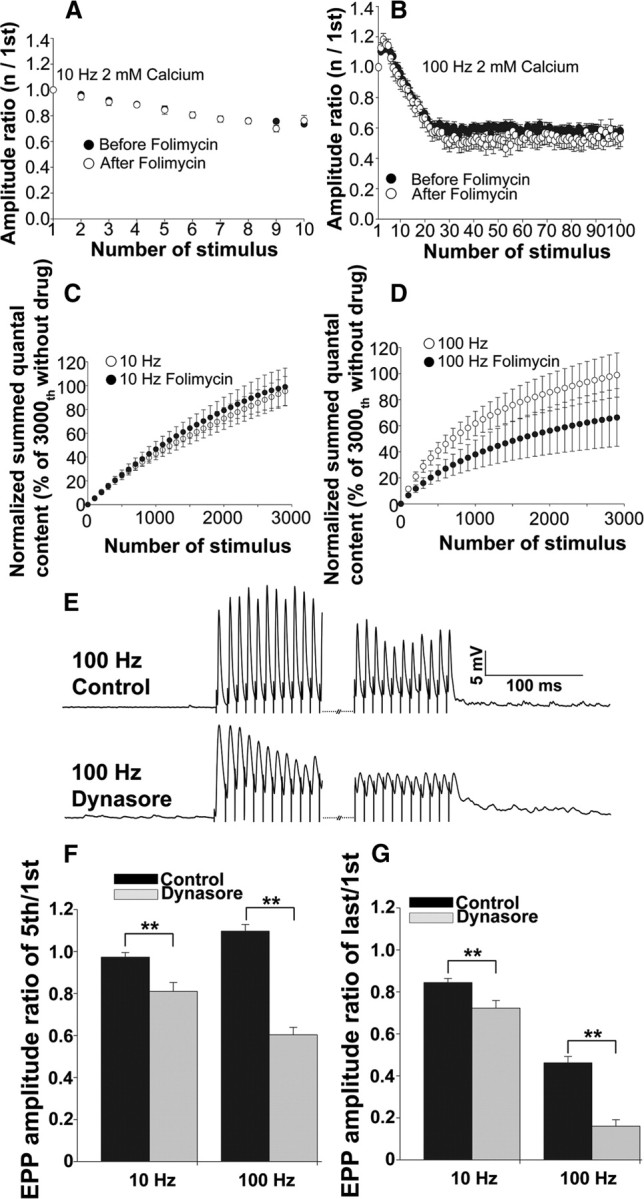Figure 5.

The effect of folimycin and dynasore on EPP amplitude with 10 or 100 Hz stimulation. A, The ratio of the amplitude of the nth/first EPP with a 10 Hz single train in the presence of (white circles; nend = 4; Nexp = 4) or absence of (black circles; nend = 14; Nexp = 14) folimycin. B, Similar EPP amplitude ratio with a 100 Hz single train with (white circles; nend = 8; Nexp = 8) or without (black circles; nend = 19; Nexp = 19) folimycin. C, Normalized summed quantal content for 10 Hz stimulation without folimycin (white circles; nend = 4; Nexp = 4) and with folimycin (black circles; nend = 5; Nexp = 5). The summed quantal content values were normalized to the value of the 3000th stimulus without folimycin. D, Normalized summed quantal content for 100 Hz without folimycin (white triangles; nend = 5; Nexp = 5) and with folimycin (black triangles; nend = 5; Nexp = 5). The summed quantal content values were normalized to the value of the 3000th stimulus without folimycin. The data for 10 Hz without folimycin and 100 Hz without folimycin in C and D are the same data set as shown in Figure 2C but normalized to the value at the 3000th stimulus. E, An example of a train of EPPs with 100 Hz stimulation recorded from a control NMJ (top) and a different dynasore-treated NMJ (bottom). The first 10 responses and the last 10 responses are shown. Dynasore treatment inhibited facilitation and greatly enhanced depression. F, The ratio of the amplitude of the fifth/first EPP with either a 10 or 100 Hz single train in the presence of (gray; nend = 7; Nexp = 2) or absence of (black; nend = 10; Nexp = 2) dynasore. G, Similar EPP amplitude ratio of last/first EPP with either a 10 or 100 Hz single train with (gray; nend = 7; Nexp = 2) or without (black; nend = 10; Nexp = 2) dynasore.
